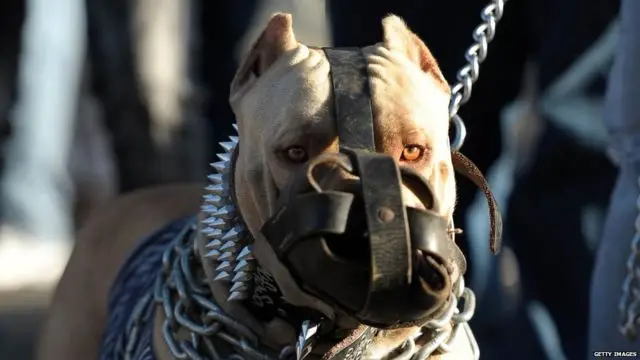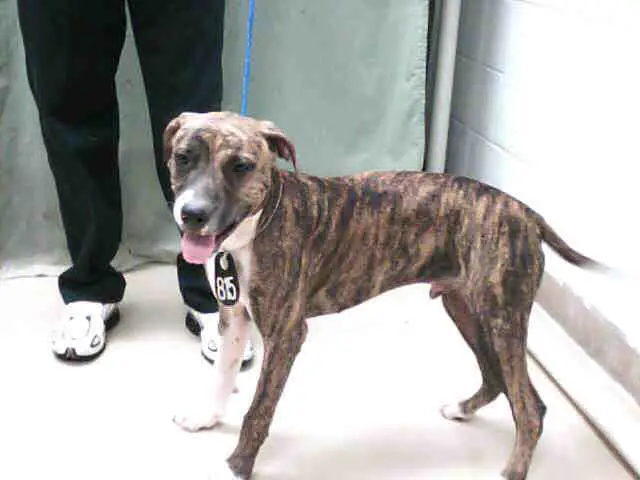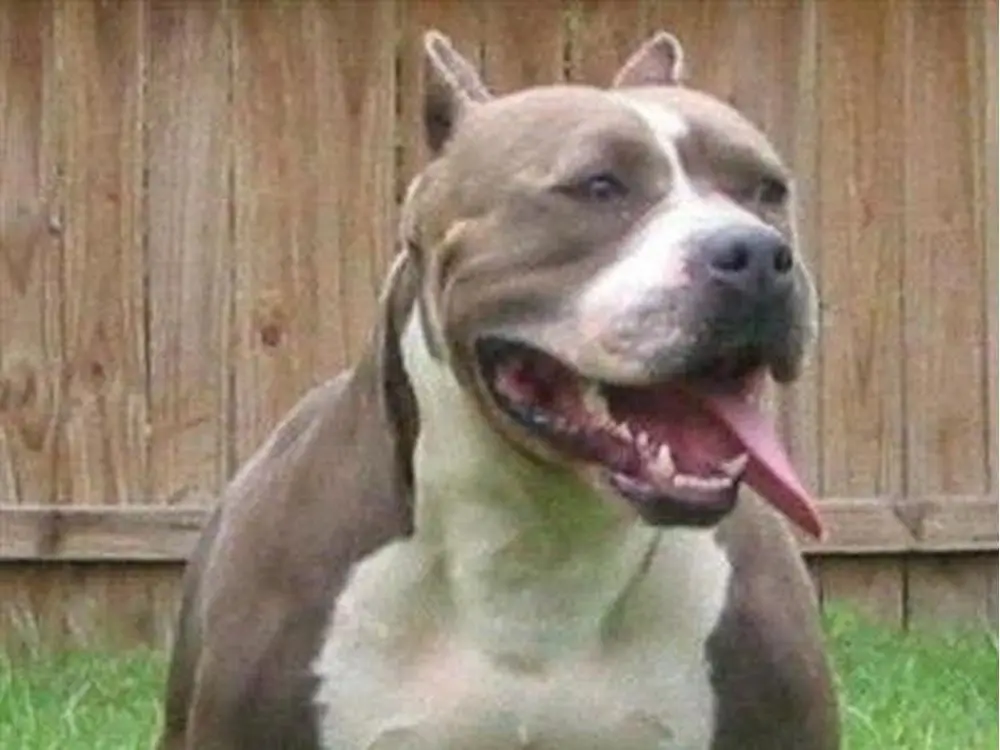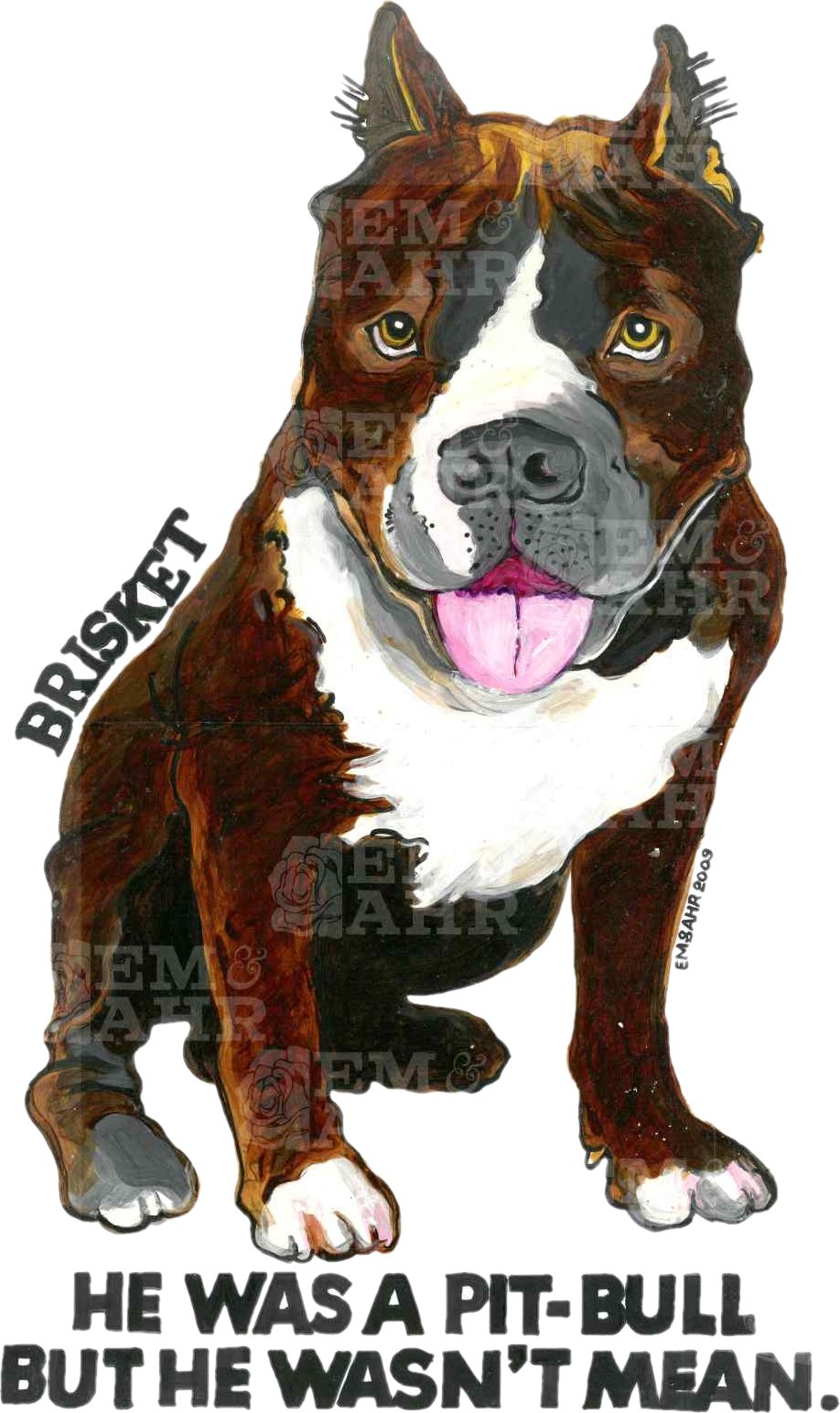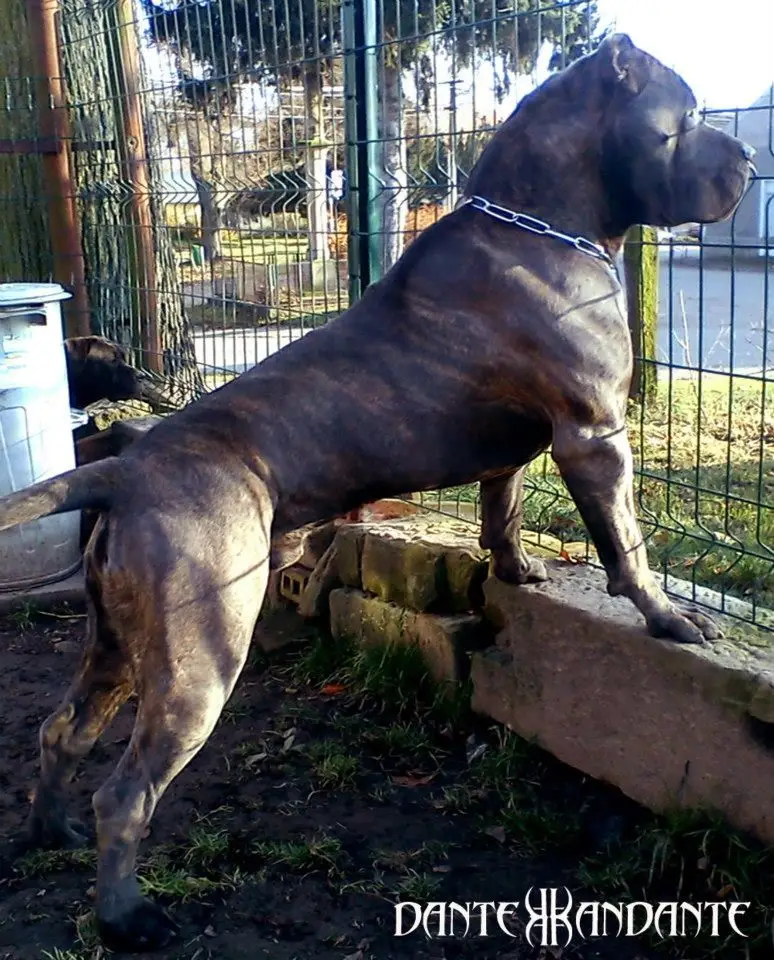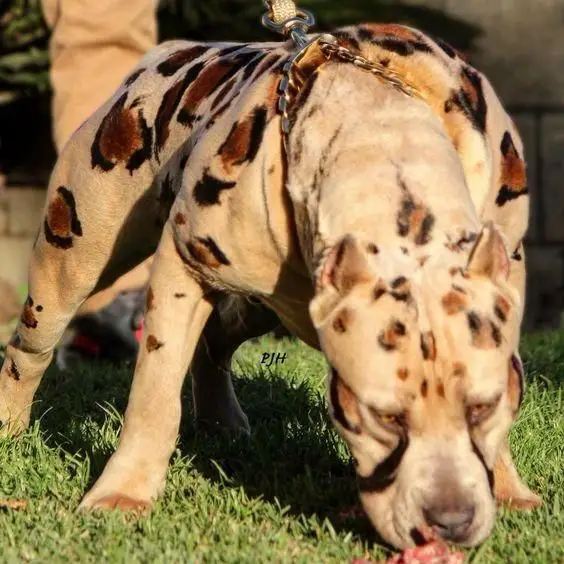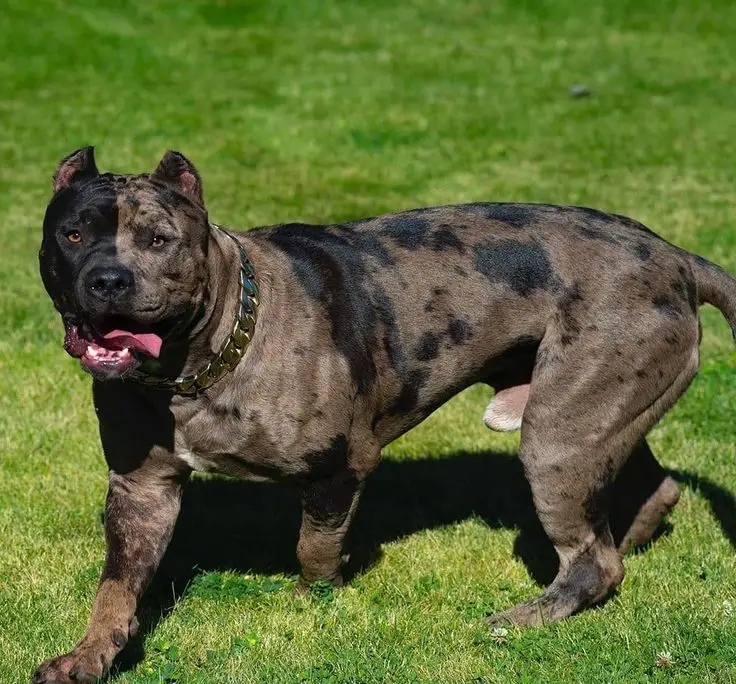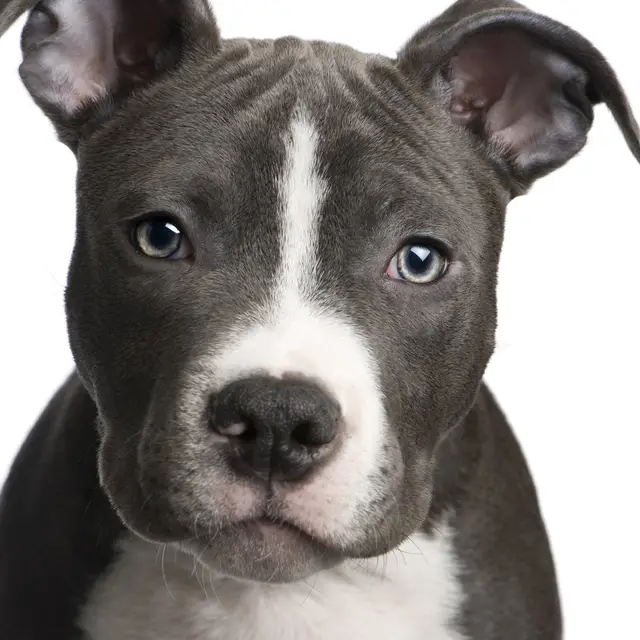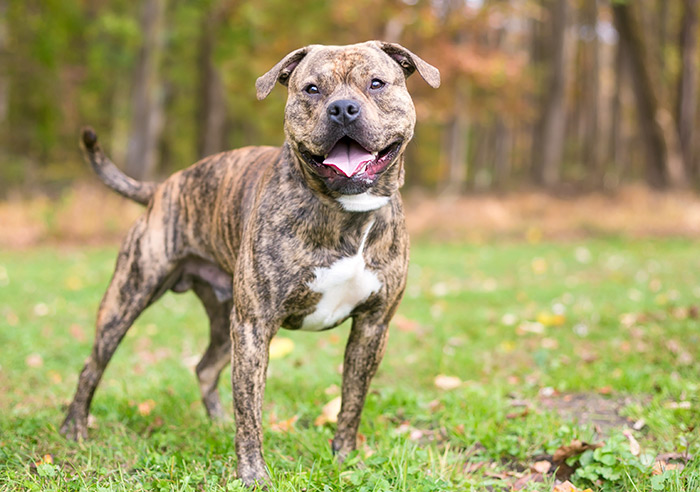“The Unique Appearance and Fascinating History of Striped Pit Bulls – A Comprehensive Guide”

Striped Pit Bull Story – Pit bulls are recognized as one of the most popular dog breeds in the world, known for their strong and muscular build, loyalty, and friendly nature. However, there is a specific type of pit bull that stands out from the rest – the striped pit bull.
These unique dogs are often misunderstood and have a fascinating history just waiting to be explored. In this comprehensive guide, we will take a closer look at the story of striped pit bulls, their distinctive appearance, the genetics behind their stripes, and the myths and misconceptions surrounding them. We will also delve into famous striped pit bulls in pop culture, the challenges they face in adoption, tips on how to care for them, and the future trends and predictions for this amazing breed.
The Striped Pit Bull Story
Striped pit bulls, also known as brindle pit bulls, are characterized by their coat pattern of varying shades of brown, black, and sometimes white. This unique coloration comes from the combination of different genes passed down from their ancestors. While all pit bulls share a similar origin, the story of striped pit bulls is quite intriguing.
Early Origins
To understand the history of striped pit bulls, we must first go back to the early 19th century. Pit bulls were originally bred in England for the cruel sport of bull-baiting. When this practice was eventually banned, these dogs were used for ratting and as general working dogs. As immigrants began to settle in America, they brought their beloved pit bulls with them, and the breed soon gained popularity in the United States.
In the early days, pit bulls were not bred for their distinctive stripes, but rather for their strength and agility. It wasn’t until later that breeders started to selectively breed for certain traits, including the unique brindle coat.
Selective Breeding
The breeding of striped pit bulls can be traced back to a few specific breeds. One of the main contributing breeds is the Staffordshire Bull Terrier, which is known for its strong and muscular build, as well as its brindle coat. Other breeds that played a role in creating the modern-day striped pit bull include the American Bulldog, English Terrier, and the American Pit Bull Terrier.
Breeders began to focus on creating dogs with the desired brindle pattern, resulting in a higher percentage of striped pit bulls being born. This led to their popularity among breed enthusiasts who were drawn to their unique appearance.
The Unique Appearance of Striped Pit Bulls
What sets striped pit bulls apart from other pit bulls is their striking coat pattern. Brindle is not considered a color, but rather a pattern, and it is caused by a gene known as K-locus. This gene is responsible for regulating the distribution of melanin, which gives the dog’s coat its distinctive shades of brown and black.
The brindle pattern can vary greatly, with some dogs having dark stripes against a light background, while others have more evenly distributed stripes. Each individual brindle pattern is unique, making every striped pit bull one-of-a-kind.
Brindle Genetics
The genetics behind the brindle coat are quite complex, involving multiple genes and factors that determine the final appearance of the dog’s coat. The K-locus gene is dominant, meaning that if a dog inherits it from either parent, they will display some form of brindle pattern. However, the intensity and distribution of this pattern can vary depending on other genetic factors.
Another gene that plays a role in the appearance of brindle is the A-Locus gene. This gene is responsible for producing eumelanin, which is the pigment responsible for black and brown coloring. If a dog has two copies of the dominant allele of this gene, they will have a darker brindle coat, while dogs with two copies of the recessive allele will have a lighter brindle coat.
Other Factors
Aside from genetics, there are other factors that can affect the appearance of a striped pit bull’s coat. These include age, diet, and environmental factors such as exposure to sunlight. A dog’s coat can also change over time, with some puppies being born with a light-colored coat that becomes darker as they mature.
Understanding the History of Striped Pit Bulls
The history of striped pit bulls is closely intertwined with the history of pit bulls in general. As mentioned earlier, these dogs were originally bred for blood sports, particularly bull-baiting. However, this cruel practice was eventually outlawed, and pit bulls were used for other purposes such as hunting, herding, and guarding.
In the early 20th century, pit bulls gained popularity in America as family pets. Unfortunately, due to their strong and muscular build, they were also used in illegal dogfighting rings. This led to negative stereotypes and misconceptions about the breed, including the belief that all pit bulls are aggressive and dangerous.
Despite these challenges, striped pit bulls continued to gain popularity among breed enthusiasts, and their unique appearance became more desirable. Today, they are recognized by major kennel clubs around the world, including the American Kennel Club (AKC) and the United Kennel Club (UKC).
The Genetics Behind Striped Pit Bulls
The genetics behind striped pit bulls are a complex topic, but they are also fascinating. As mentioned earlier, brindle is not considered a color, but rather a pattern caused by the K-locus gene. However, there are other genes and factors that can influence the distribution and intensity of this pattern.
Coat Color Inheritance
To understand the genetics behind brindle, we must first understand how coat color is inherited in dogs. Each dog has two copies of each gene, one inherited from the mother and one from the father. These genes can be either dominant or recessive, and depending on which combination a dog inherits, their coat color will be determined.
The K-locus gene is located on chromosome 9 in dogs and has three possible alleles – KB, kbr, and ky. KB is the dominant allele that produces a solid-colored coat, while kbr is responsible for the brindle pattern. The ky allele produces a yellow coat, but it is rarely seen in pit bulls.
The Role of Other Genes
Aside from the K-locus gene, there are other genes that can affect the appearance of a striped pit bull’s coat. As mentioned earlier, the A-Locus gene plays a role in producing eumelanin, which affects the intensity of the brindle pattern. The E-Locus gene, also known as the extension gene, is responsible for producing phaeomelanin, which gives the coat its red and yellow hues.
Other factors such as modifiers, polygenes, and hormones can also influence the distribution and intensity of the brindle pattern. For example, the dilution gene can create a lighter-colored coat, while the piebald gene can cause white markings on a dog’s coat.
Myths and Misconceptions Surrounding Striped Pit Bulls
Striped pit bulls have unfortunately been subject to many myths and misconceptions due to their association with the overall misunderstood pit bull breed. These myths often stem from ignorance and lack of understanding about these amazing dogs.
Myth: All Striped Pit Bulls Are Aggressive
One of the most common myths surrounding striped pit bulls is that they are all aggressive and dangerous dogs. This stereotype is largely perpetuated by the media, as they tend to sensationalize stories involving pit bulls behaving aggressively. However, just like any other breed, a dog’s behavior is largely dependent on how they are raised and trained. With proper socialization and training, striped pit bulls can make loving and loyal family pets.
Myth: Striped Pit Bulls Are Not Good with Children
Another misconception about striped pit bulls is that they are not suitable for homes with children. This couldn’t be further from the truth. In fact, pit bulls were historically known as “nanny dogs” due to their gentle and protective nature towards children in the home. As with any breed, it is important to supervise interactions between dogs and children and teach them how to interact with each other properly.
Myth: Striped Pit Bulls Have Locking Jaws
One of the most persistent myths about pit bulls, in general, is that they have locking jaws. This is simply not true. The structure of a pit bull’s jaw is no different from any other breed, and there is no scientific evidence to support the idea of a “locking jaw”. This myth likely stems from the powerful bite force of pit bulls, which can exceed 2000 pounds per square inch.
Famous Striped Pit Bulls in Pop Culture
Striped pit bulls have become increasingly popular over the years, and many of them have gained fame through various forms of media. From movies and TV shows to social media, these amazing dogs have captured our hearts and become beloved household names.
Pete the Pup
Pete the Pup was a fictional dog character in the original Our Gang comedies from the 1920s onwards. He appeared in over 150 shorts and was recognized as the unofficial mascot of the series. Pete was a brindle pit bull with a distinctive ring around his right eye, which made him stand out among the other characters.
Tige
Tige was another famous brindle pit bull, known for appearing in the Buster Brown comic strip in the early 1900s. The strip was used to advertise shoes and clothing for children, and Tige was the dog of the main character, Buster Brown. Tige was known for his humorous antics and became a beloved character among readers.
The Little Rascals
In the 1994 film adaptation of the Our Gang series, the character of Pete the Pup was played by a brindle pit bull named Petey. This iconic dog with a ring around his eye has become synonymous with the Little Rascals franchise and is often seen in promotional material and merchandise related to the series.
Challenges Faced by Striped Pit Bulls in Adoption
Despite their popularity and unique appearance, striped pit bulls often face challenges when it comes to adoption. This is largely due to the negative stereotypes and misconceptions surrounding the breed, as well as breed-specific legislation (BSL) in some areas.
BSL
Breed-specific legislation refers to laws and regulations that target specific breeds of dogs, usually those perceived as “dangerous”. This includes pit bulls, which are often subject to restrictions or even bans in certain cities and countries. BSL is often based on fear and ignorance rather than facts and can prevent loving families from adopting a striped pit bull simply because of their breed.
Negative Stereotypes
As mentioned earlier, striped pit bulls are often associated with negative stereotypes and misconceptions, such as being aggressive and dangerous. These stereotypes can make it difficult for these amazing dogs to find forever homes, as potential adopters may be hesitant to take on a breed that is perceived as a liability.
Challenges for Animal Shelters
Animal shelters also face challenges when it comes to finding homes for striped pit bulls. Many people are deterred from adopting them due to the negative stereotypes and misconceptions, leading to overcrowding in shelters and an increased risk of euthanasia for these dogs. It’s important for shelters to educate the public about these amazing dogs and dispel any myths or misconceptions.
How to Care for a Striped Pit Bull
Striped pit bulls, just like any other breed, require proper care and attention to thrive. Here are some tips on how to care for your striped pit bull:
Nutrition
A balanced and nutritious diet is essential for the health and well-being of your striped pit bull. It’s important to feed them high-quality dog food that is appropriate for their age, size, and activity level. Avoid overfeeding, as pit bulls are prone to obesity, which can lead to health problems.
Exercise
Pit bulls are an active breed that requires daily exercise to keep them physically and mentally stimulated. A brisk walk or run, playing fetch, or engaging in other activities such as agility training are great ways to keep your striped pit bull entertained and healthy.
Grooming
Striped pit bulls have a short, smooth coat that is easy to maintain. They shed moderately throughout the year, and regular brushing can help remove loose hair and keep their coat healthy and shiny. It’s also important to regularly check their ears for any signs of infection and trim their nails as needed.
Socialization
Proper socialization is crucial for all dogs, but it is especially important for pit bulls due to the negative stereotypes surrounding their breed. It’s important to expose your striped pit bull to different people, animals, and environments from a young age to ensure they are well-adjusted and friendly towards others.
Training Tips for Striped Pit Bulls
Training is an essential part of caring for any dog, and striped pit bulls are no exception. These intelligent and eager-to-please dogs can excel at various activities with the right training and guidance. Here are some training tips specifically for striped pit bulls:
Positive Reinforcement
Positive reinforcement is the most effective and humane way to train any dog, including striped pit bulls. This involves rewarding good behavior with treats, praise, and affection, rather than punishing bad behavior. Pit bulls respond well to positive reinforcement and will quickly learn what is expected of them.
Early Training and Socialization
As with any breed, starting training and socialization from a young age is crucial for the development of a well-behaved and well-adjusted dog. Begin training your striped pit bull as soon as you bring them home, and expose them to different people, animals, and environments to help them become confident and friendly.
Obedience Training
Pit bulls are an intelligent breed that thrives on mental stimulation, making obedience training an excellent way to keep them engaged and well-behaved. Enroll your striped pit bull in obedience classes or work with a professional trainer to teach them basic commands and manners.
The Future of Striped Pit Bulls: Trends and Predictions
Striped pit bulls have come a long way since their early origins as fighting dogs. Today, they are recognized as loving and loyal family pets, and their popularity continues to grow. Here are some trends and predictions for the future of this unique and fascinating breed:
Increased Popularity
Striped pit bulls have been gaining popularity over the years, and this trend is likely to continue. As more people become aware of these amazing dogs and their unique appearance, we can expect to see an increase in demand for them as pets.
Breed-Specific Legislation
Unfortunately, breed-specific legislation is still a reality in many places, and it remains a significant challenge for striped pit bulls and their owners. However, there has been a growing movement to repeal BSL and replace it with more effective and fair laws that target irresponsible dog ownership rather than specific breeds.
Advocacy and Education
Many organizations and individuals are working tirelessly to advocate for pit bulls and educate the public about the truth behind these amazing dogs. With increased advocacy and education, we can hope to see an end to the negative stereotypes and misconceptions surrounding striped pit bulls.
Conclusion
Striped pit bulls are a unique and fascinating breed with a rich history and a bright future. These often misunderstood dogs have captured the hearts of many and continue to gain popularity worldwide. It’s important to educate ourselves and others about these amazing dogs and dispel any myths and misconceptions that may hinder their well-being.
By understanding their story, genetics, and unique appearance, we can appreciate the true beauty and potential of striped pit bulls. As responsible dog owners, it is our duty to give these incredible dogs the love and care they deserve and help them thrive as beloved family pets.

